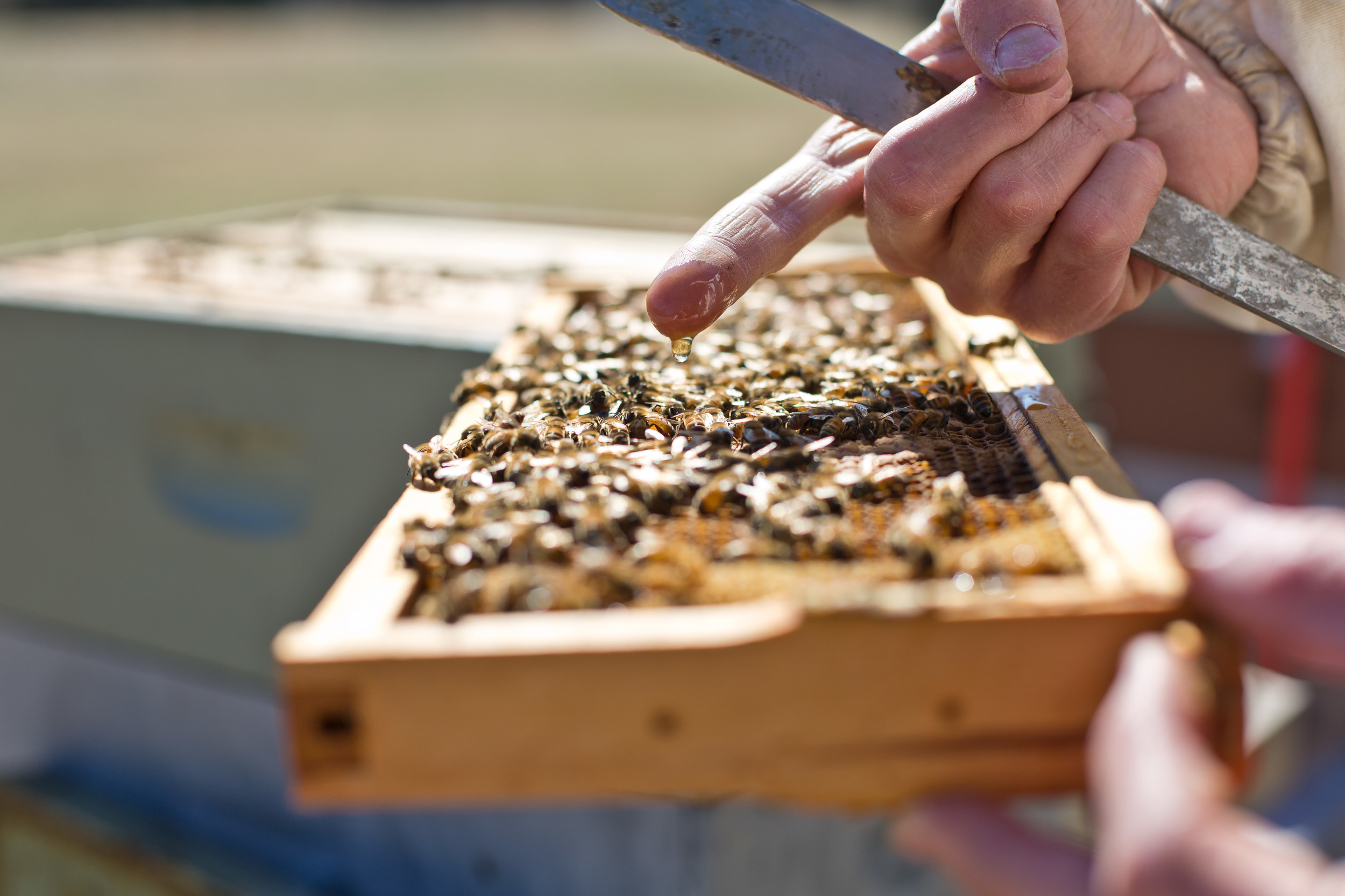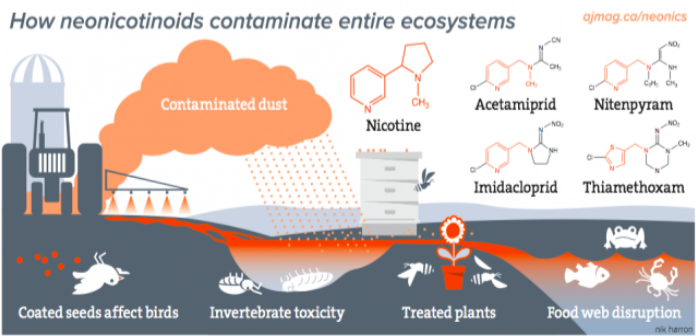Well, here we are guys! Episode 3 of our Save the Bees series (here's part 1 and part 2) and I'm blown away by the support I've received from everyone so far - its been heart-warming to see everyone's pledge to join in on this important mission. For those of you who haven't been following along, In September I attended attended ShiftCon on behalf of YBC - it was at this conference that I found myself participating in a discussion panel lead by Tiffany Finck-Haynes. Tiffany is a Food Futures Campaigner for the Food and Technology Program at Friends of the Earth and gave us a super informative presentation that educated us on whats been happening to the bees in our very own backyards. Her panel covered everything from recent die-off reports to why this is happening and who’s responsible along with tips and tricks we can do to help save the bees. I'm so excited to be sharing all the eye-opening knowledge I gained from her and the rest of the team at FOE. I've also met Jay Williams along the way, Jay is the proud owner of Williams Honey Farm in Tennessee and has decided to partner up with YBC on some exciting projects and has given me some great first hand knowledge for this series. So as promised, we're going to talk about the the many contributing factors of CCD.
Colony Collapse Disorder is a complicated topic and unfortunately there are a lot of things to consider when trying to find the answers. With the help of Tiffany from FOE and Jay, the proud owner of Williams Honey Farm I’m going to tell you a little about the different factors contributing to CCD along with who and what might really be responsible.
provided by Jay Williams, Williams Honey Farm
Jay brought a lot to the table here and I learned a few things I hadn’t known before - one of them being a contributing factor to CCD. Jay mentioned that we just don’t have the genetic diversity that we used to when it comes to domesticated bees. He goes explained, “There aren’t as many people producing [queen] bees as there used to be and there are less wild bees for the queens to mate with. Less queen breeders (only 500 left in the country) mean less genetic diversity, more inbreeding, and thus leading to weaker bees.” Jay even gave us an example of how far some beekeepers have gone to simplify the process for themselves without consideration for the bees. By nature, bees have a strong stinger and a weak immune system. To protect themselves they produce a sticky substance called propolis that’s naturally anti fungal and antibacterial; they use the propolis to line the insides of their hive, kind of like a back-up external immune system. So what’s this have to do with the beekeeper you ask?
Jay goes on to say, “This is great for the bees but bad for the beekeeper because it slows you down having to pry apart every piece of sticky equipment. The answer has been to breed this propolis producing characteristic out of the bees to help the commercial beekeeper. The result has been weaker bees.”
I’d be willing to bet that you guys have an idea as to how well-traveled our nation’s little pollinators actually are - but not by their choice. I learned from Tiffany that bees normally forage no more than one to three miles from their hive so commercial beekeepers have resorted to moving bees from one place to another in order to pollinate crops during their bloom time. Below she was able to provide a map showing possible routes of a commercial beekeeper’s colonies.
commercial beekeeper travel routes (source: www.foe.org)
bees transported by semi-truck (source: www.foe.org)
I was able to learn more about how this transportation system actually affects the bees through Jay. He added that “so many bees are trucked across the country to aid in pollination that our bees are way more stressed than they used to be. They can be in Florida one week and then California the next. They don’t get to follow any seasonal rhythm and as a result they get weaker and easily fall ill. What’s more, what happens when you gather 80% of the country’s bees in the same area all at once? They trade diseases and then bring it all back home when the crops are done. It’s like getting a group of people from all over the country, bringing them to your office in CT, trading the flu, and then sending them home to spread the flu.”
Williams Honey Farm "Bloom Box"
Another factor that was brought to my attention was the fact that there simply isn’t enough forage for the bees to work. I have to admit, this was quite shocking to me. How could there not be enough food for the bees if they help to pollinate such a large portion of our crops?! Luckily Jay was able to step in to help me better understand. “The food that is commonly given to the bees by the beekeeper is “empty calories” like sugar water or worse, high fructose corn syrup. It’s like taking all the vegetables away from your kid and instead giving them McDonalds every day. Our bees are not getting the nutrition they deserve. This was the most startling realization we had about our bees. Bees in our state were not being served the food they needed.” It was because of these findings that Jay actually started a new movement across the country called PolleNation. The idea behind it being instead of having a “beautiful wasteland” i.e. a perfectly manicured grassy backyard (which has no benefit to the wild bees) start planting bee and butterfly friendly flowers! Jay and his team actually started building “bloom boxes” for people packed with beautiful perennial flowers that alternated bloom periods to feed pollinators from March through November. They even went as far as making and selling custom seed bombs - which he was generous enough to include in our most recent YBC mantra boxes (scoop up your Spring YBC Mantra Box box now while you still can!) along with some delicious honey straws. But we'll go into more details about this later on in the series ;-)
neonic coated seed (source: www.foe.org)
Tiffany actually took it a step further and explained that most plants found at your local Home Depot or Lowes along with the majority of commercialized crops are pre-treated with pesticides like Round-up. Round-up contains neurotoxic pesticides called neonicotinoids, which just happen to be the fastest-growing and most widely used class of synthetic pesticides today. One way the pesticide is applied is with a simple coating around the seed itself, like the one you see to the left.
These neonics (short for neonicotinoids) are absorbed from the soil (thanks to that seed!) by the roots and transported to other parts of the plants like pollen and nectar. Neonics are highly soluble in water and can also find their way into the air (in the form of dust) in and around crops/farming fields. Tiffany provided these helpful graphics below.
neonics being absorbed through the roots (source)
What happens is that that the worker bees contaminate themselves with this toxic residue through drinking water, pollen, nectar and simply by carrying dust particles on their bodies back to the hive. Once this happens the queen bee and hives bees are then exposed - essentially affecting the entire colony. Research suggests that for every trip outside the hive a bee makes, they bring back anywhere between 6-30 different types of pesticides. Which I guess wouldn’t be a big deal if numerous studies didn’t reveal that neonics can kill bees outright by attacking their nervous systems. Even low levels of exposure have been shown to disrupt foraging abilities, navigation, learning, communication, memory and even suppresses the immune systems of bees, making them more vulnerable to disease and pests.
how neonics contaminate entire ecosystems (source: www.foe.org)
There are over 140 crops treated with neonics across our nation today but it wasn’t always this way. Take a look at the map below; it shows the growth and widespread use of neonics in the US starting back in 1994 through 2009 - imagine what is looks like today with the entire neonicotinoid global market at an estimated $2.6 billion back in 2009. Pretty suspicious that beekeepers started noticing odd behavior and significant die offs around 1996 - just a short time after these new pesticides made their way onto the market.
widespread neonic use from 1994 to 2009
Just one seed coated in neonics is enough to kill a songbird, so I can’t help but question, are neonics actually helping? Or are they doing more damage then good? And guys, don’t think that the birds, bees and butterflies are the only ones being affected by these toxins. According to the European Food Safety Authority, neonics may affect the developing human nervous system of children and are actually recommending that the European Commission further restrict the use of them within the EU.
3 top sellers of neonics (source)
With so much money to lose you better believe that the major corporations behind the neonic industry are shamelessly shifting the blame elsewhere by pointing their big money-making finger at almost everyone and everything else. In episode 4 of this series I’ll go over what the creators of these pesticides have to say about CCD and its main cause.
So let us know if you're still on board to save the bees in the comments below, along with any questions you may have or any fun facts you want to share! Part four comes in a couple weeks, so be on the look out!










